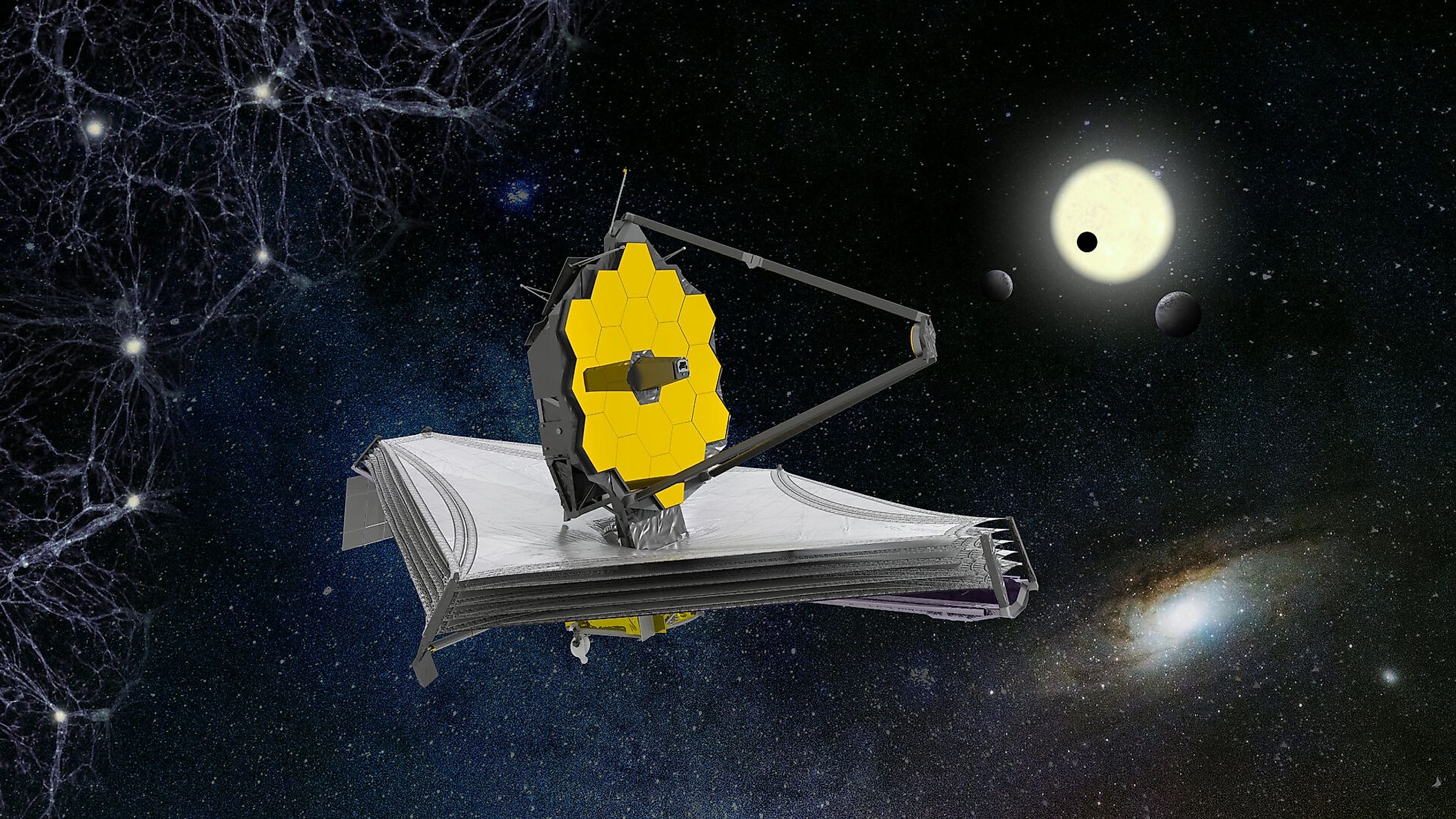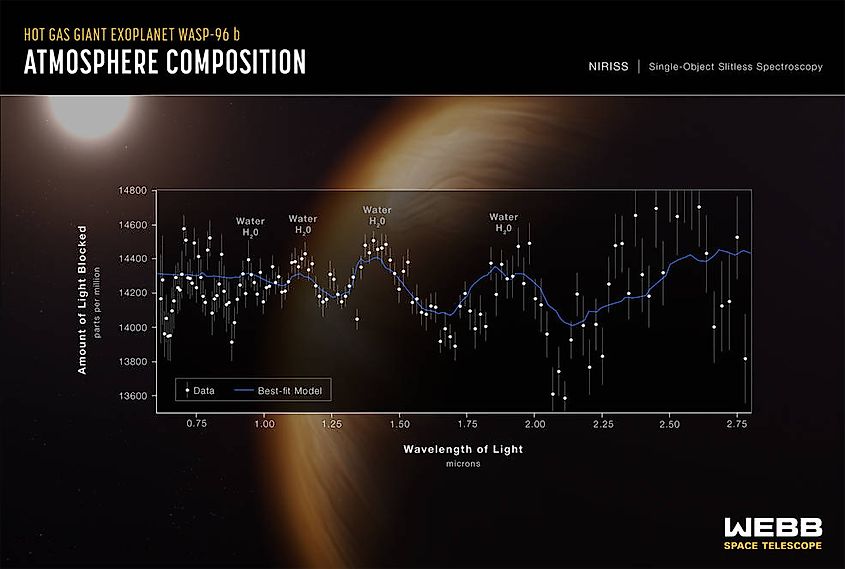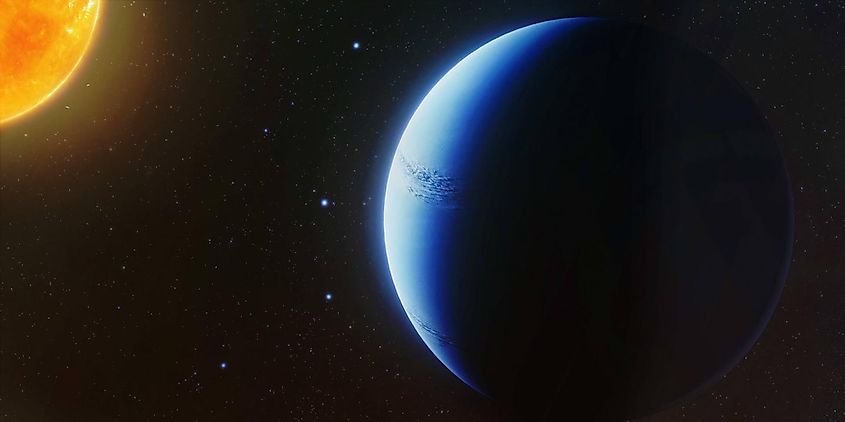
James Webb Telescope Finds Water In Exoplanet Atmosphere
The James Webb Space Telescope (JWST) has just sent back its first color images of space, yet that is not the only data it has provided. Along with a stunning mosaic of images, NASA has also released data on the atmosphere of a distant exoplanet, revealing that it contains water vapor in its atmosphere. Webb is currently the most powerful telescope ever built, and it is able to analyze the composition of planetary atmospheres in other solar systems. Although previous telescopes, including Hubble, were able to analyze exoplanet atmospheres to some extent, Webb will be able to analyze them in far more detail, providing scientists with unprecedented amounts of data.
First Exoplanet Target
For its first exoplanet target, scientists chose a gas giant planet designated as WASP-96b. WASP-96b is located roughly 1,150 light years away in the constellation Phoenix. Like Jupiter, WASP-96b is a gas giant, yet it is far different from anything in our solar system. It has a mass that is only half as big as Jupiter’s, yet it has a diameter 1.2 times larger than Jupiter’s. It may seem strange for a less massive planet to be so large, yet WASP-96b is actually extraordinarily puffy. WASP-96b is a hot-Jupiter, and so it orbits its star far closer than any of the planets in our solar system orbit the sun. Thus, WASP-96b experiences extreme temperatures, which cause the planet to expand or “puff” out, making it larger than it otherwise would be. WASP-96b orbits so close to its star that it takes a mere 3.5 Earth days to complete one orbit. Since WASP-96b is large and it has a short orbital period, it was a perfect first target for Webb.
How To Analyze A Planet’s Atmosphere

How does a telescope analyze a planet’s atmosphere? The process is actually rather simple. When a planet passes in front of its star, light from the star must pass through the planet’s atmosphere. As it does, atoms and molecules in the atmosphere will absorb the light and re-emit it into space. Electrons orbiting atoms will absorb particles of light, called photons, and this will give the electrons energy. As a result, the electrons will “jump” to a higher energy level. Then, the electron will emit that same photon and fall back to its original energy level. Interestingly, every atom in the universe has its own unique energy levels, and so by determining the energy of photons, scientists can determine which atoms absorbed and emitted those photons. Thus, the composition of an object can be determined by analyzing the light it absorbs and emits. When starlight passes through a planet’s atmosphere, it gets absorbed and emitted by the chemicals in the atmosphere. By observing the light that passes through an atmosphere, scientists can determine the composition of the atmosphere using a spectroscope.
Atmosphere Of WASP-96b
The first planetary atmosphere analyzed by Webb was that of WASP-96b. Although the atmosphere of this gas giant had been analyzed before by other telescopes, the sheer power of Webb has allowed it to analyze the atmosphere in unprecedented detail. Although Webb confirmed previous observations of WASP-96b, it also found something interesting: the existence of water in the planet’s atmosphere. Unfortunately, this water is not in liquid water form. Rather, Webb found the signature of water vapor and clouds in the planet’s atmosphere. However, this represents and amazing discovery, because it shows that Webb is capable of detecting water on other planets.
Future Observations Of Exoplanets

Webb will analyze the atmospheres of multiple exoplanets, some of which could potentially be habitable. In fact, Webb has the capability of determining whether or not a planet’s atmosphere could support the existence of life. Webb will observe potentially habitable worlds and look for atmospheres similar to the Earth’s. Webb could potentially even find evidence of living things depending on the composition of an atmosphere.











